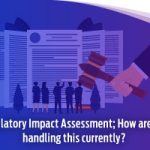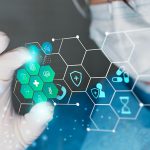
Blog
Future LABELING: Data Digitization, Structure and Automation
Labeling process prominence has increased over the years and manufacturers are trying to manage product labeling & artwork at the same time while maintaining end-to-end life cycle changes of product labeling. In the current scenario, labeling can be in various forms, both physical and digital as well. Controlling the labeling content becomes difficult as it comes from diverse sources and all these content changes during the product lifecycle process is a daunting task for labeling teams. Labeling Automation can help ease these challenges.
Automation & AI
Artificial Intelligence is involved in various domains like education, retail marketing & healthcare sector, etc. To that, data labeling is a vital aspect in the healthcare domain (Pharmaceutical industry) with its keen specifications predefined by the health regulatory authorities (HRA). Systems need to understand what is shown on the display part such as images, symbols, written text & among many other things. Medical labeling is an imperative or integral stage of data preprocessing in supervised learning (machine learning) process. Historical data with predefined target attributes (values) is used for this process model.
Organizations look forward to collaboration so that all the data is available at the source thus enabling them to keep a check on the labeling content. To ensure this control, e-labeling has already entered the market and with time it is taking up much of the space in the life science industry.
Labeling data service comprises many different tasks. This includes adding electronic markings on image files, text files, categorizing texts, etc. As mentioned above, adding markings on images or text is an important part of data labeling service. Data coding is the key aspect in the Automation process and certain modules or templates to be designed and populate internally. All the labeling functional aspects will be identified, captured and coded in way of business rules (predefined data integrity) to the system. Each data element will give the system a better understanding and execution of the outcome for defined processes. This allows the algorithm to recognize different shapes in various positions and also possible to tag or map the data element. The algorithms can only function properly if there is some sort of human intervention then the system machines can produce human-like results
Data Digitization
The digital revolution is inevitable. It is already happening. Soon it will ease the burden of brand attraction and information which is at the moment moving swiftly onto packages. Converters will become the dominant producer of paper-based information. In simple terms, consumers will get product information online by scanning the RF tag or barcode with their Smartphone. This is already happening, so it is safe to conclude that the future is here. Fortunately, things can only get better and easier for the consumer. It can be combined with packaging and can be used by marketers to encourage potential buyers to purchase the product
Data Capturing & NLP Technology
Some specifications regarding labeling activity are the key thing in the machine learning process. For example, some of the label content may require to represent and executing in a particular native language or coming from a specific region. In other cases, a more detailed description of the individual field is necessary on how and what content to be present. In this process for each assigned task user-based credentials are given as needed by the customer for the required job. Understanding all text would be difficult in the machine learning process. Natural language or Natural language process (NLP) is unlike constructed or formal language and can therefore not easily be parsed by machines.
The next decade will demand bigger changes in process systems and expected greatly reduced materials used in packaging and goals of 80− 90% recovery.
Digitization and automation will enable comprehensive recovery and re-use of packaging materials. So the big question is how ready your teams and your company are for these changes. Take small steps with the phased approach supported by the right technology/tool and start applying to different labeling processes without boiling the ocean or waiting for a big silver bullet to rescue.
Explore Topics
- Clinical Automation (5)
- event1 (1)
- IRT & CLinical Supplies (2)
- Labeling (1)
- Regulations (1)
- Regulatory Automation (3)
- Regulatory Information Management (4)
- UDI (1)
- Uncategorized (5)
- Writing (6)
Recent Blogs
 Regulatory Impact Assessment; How are you handling…April 5, 2024
Regulatory Impact Assessment; How are you handling…April 5, 2024 Mexico: Modifications to Medical Device Registrati…November 8, 2023
Mexico: Modifications to Medical Device Registrati…November 8, 2023 Is Regulatory Team Overworking but Unproductive?November 7, 2023
Is Regulatory Team Overworking but Unproductive?November 7, 2023